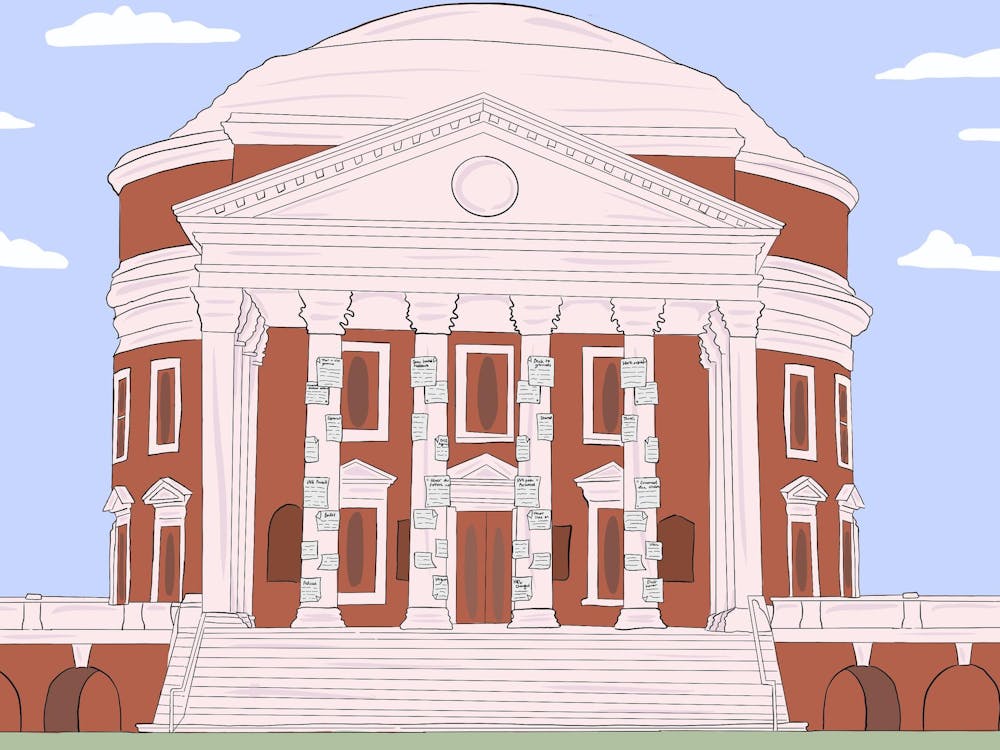RACISM, racist and race itself are peculiar words, as their definitions change constantly and shift according to context. Comments one person thinks are innocent are deemed racist by others; people considering themselves one race are, in a different context, called something else. The inability of these words to consistently reflect social reality highlights the complexity of "social reality." Nowhere can we find a better case study than in the controversy surrounding the dress code recently implemented at Jaberwoke.
According to a recent Cavalier Daily article, their dress code prohibits hats without brims, baggy clothing, sweatpants, plain white t-shirts and camouflage (except when worn by a member of the Armed Forces). Some have responded by saying that this policy is racially motivated, a charge which Jaberwoke vehemently denies.
Those asserting that the policy is racially motivated argue against its hidden motives. Second-year Law student Gabriel Walters, president of the American Civil Liberties Union chapter of the Law School, told The Cavalier Daily that the "policy itself and the items of clothing listed may be racially neutral; however, the intent of the policy is suspicious and I think that the application of the policy may very well be race-specific." Therefore, Jaberwoke may be trying to prohibit blacks from entering by prohibiting "black" clothing.
Defenders of the prohibitions return fire by defending their intentions. They don't mean to bar blacks, but a certain type of customer which may be prone to misbehavior. They point out that people wearing brimless hats and baggy clothing may be more likely to cause trouble.
Both sides have a valid point, yet both fail to see that the debate is framed in a superficial way that, unfortunately, perpetuates undesirable racial stereotypes. To understand this, we must understand that racism does not depend solely on individuals. If it did, we would discard many of our stereotypes merely by seeing the multitude of exceptions applicable to each stereotype. Instead, they often rely on concepts, associations, objects, institutions, etc. For example, one stereotype claims that blacks wear baggy clothes. Yet a simple glance around Grounds reveals the true variety with which blacks, or any race, dress.
Nonetheless, the relationship between blacks and baggy clothing remains strong, largely because stereotypes work in a complex framework of interconnected associations, not simply one-to-one relationships. In other words, simply seeing an exception to a stereotype does nothing to hurt the stereotype and, in fact, may reinforce it. This is seen when someone black like Kanye West is described as dressing "preppy," which often translates into dressing "white" -- here, instead of breaking the stereotype, the exception reinforces it. Instead of accepting at a meaningful level that blacks dress in a variety of ways, people continue to use the same framework. As a result, we hear paradoxical yet acceptable colloquial such as describing a black individual as dressing "white."
In fact, if a black person accumulates enough "white" qualities, the person may even be called, half-jokingly, "white." Take, for example, Colin Powell -- a well-dressed, well-educated, Republican black man. He is often called "white," even by blacks, because he is an exception to many of the racist stereotypes held against blacks. I personally experienced this visiting the Dominican Republic; I was often deemed white, both by locals and Americans, despite my skin color, because in context, I was the stereotypical vacationer, which has a network of strongly white racial implications.
This happens because stereotypes work by associations and relationships, not simply with individuals. The stereotype that blacks wear baggy clothing isn't dependent on seeing black people wearing baggy clothing. Rather, it works on the less easily counteracted notion that baggy clothes are in fact "black" clothes. This is reinforced by other associations: they're worn by rappers, who perform "black" music, in the ghetto, which is the "black" part of town, etc. No number of exceptions will reverse this understanding, until these important associations are disturbed.
The relevant question in the Jaberwoke case study should not be "are we targeting trouble makers or blacks?" Instead, it should be "what kind of associations are we reinforcing in the way we frame this debate?" Contrary to Walters' statement, the list of prohibited clothing is racially charged. Framing the debate around the racist intentions of Jaberwoke reinforces the racially perceived nature of baggy clothes -- it implies they are black clothes. Similarly, Jaberwoke's defense -- that they merely intend to keep out misbehaving customers -- reinforces the network of associations, all of which tie blacks to baggy clothes and misbehavior. It is not the policy, but the way we approach the debate, that is racially inappropriate.
Sina Kian's column appears Tuesdays in The Cavalier Daily. He can be reached at skian@cavalierdaily.com.






